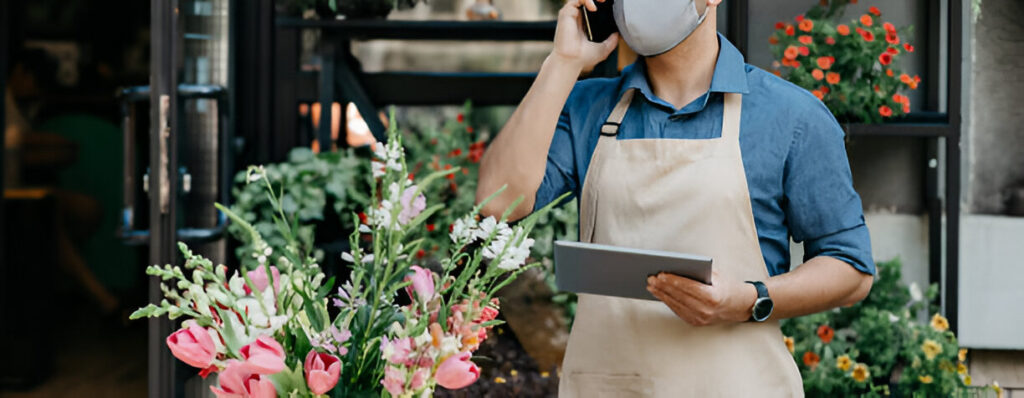In today’s fast-paced world, people are increasingly relying on mobile apps to fulfill their everyday needs, including flower deliveries. With the ease of ordering and the promise of timely delivery, a flower delivery app offers convenience to both customers and florists. If you’re considering creating a flower delivery app, you’re in the right place. This detailed guide will take you through the process of Flower Delivery App Development, from conceptualization to launch, ensuring that your app is optimized for user satisfaction and business growth.
Contents
- 1 Understanding the Basics of Flower Delivery App Development
- 1.1 Step 1: Research and Planning
- 1.2 Step 2: Choose the Right Flower Delivery App Development Company
- 1.3 Step 3: Define Essential Features of the Flower Delivery App
- 1.4 Step 4: Develop the Backend Architecture
- 1.5 Step 5: Select the Right Technology Stack
- 1.6 Step 6: Test the App Thoroughly
- 1.7 Step 7: Launch and Market the App
- 1.8 Step 8: Provide Post-Launch Support and Updates
- 2 Conclusion
Understanding the Basics of Flower Delivery App Development
Before diving into the development process, it’s essential to understand the key elements of Flower Delivery App Development. At its core, a flower delivery app connects florists with customers who want to send flowers for various occasions like birthdays, anniversaries, weddings, or even as a surprise gesture. The app facilitates order placement, payment processing, and delivery tracking, making it a highly efficient solution for modern-day flower businesses.
The app can be a standalone platform for your business or a marketplace that connects multiple florists to customers. Regardless of the model, your app should provide an easy-to-use interface, multiple payment options, and seamless delivery services to ensure customer satisfaction.
Step 1: Research and Planning
Every successful app starts with thorough research and planning. You need to identify your target audience and analyze competitors offering similar services. Understanding your audience’s needs will allow you to tailor your app’s features accordingly.
Target Audience: Your target users may include individuals looking to send flowers for personal occasions, corporate clients sending flowers for events, or local businesses.
Competitor Analysis: Identify popular flower delivery apps and note the strengths and weaknesses in their service offerings. Understanding your competition will help you stand out and offer unique features in your app.
Business Model: Will you run your own flower delivery service, or will your app be a platform for various florists? Deciding on this early will guide your development process.
Once you have a clear understanding of your audience and competitors, you can move forward with a detailed project plan. This includes defining the app’s features, setting a budget, and determining timelines.
Step 2: Choose the Right Flower Delivery App Development Company
Partnering with a reliable Flower Delivery App Development Company is critical to the success of your project. A professional development company brings technical expertise, industry insights, and an understanding of current trends to the table. Here’s what you should look for in a development company:
Portfolio and Experience: Review the company’s past projects, especially if they’ve developed delivery apps before. This will give you confidence in their ability to execute your vision.
Client Reviews: Feedback from previous clients will provide insight into the company’s ability to meet deadlines, resolve issues, and maintain open communication.
Customization Options: A great development company should offer tailored flower delivery app development solutions that fit your specific business needs.
Post-Launch Support: Ensure that the company offers maintenance and updates post-launch to keep your app functioning smoothly.
Step 3: Define Essential Features of the Flower Delivery App
To compete with established apps, your flower delivery app must offer essential features that cater to both customers and florists. Here’s a list of critical features for your Flower Delivery App Development project:
1. User-Friendly Interface
Your app’s design must be intuitive, allowing users to browse through flower arrangements, choose a delivery time, and place an order with minimal effort. Ensure that users can easily find what they’re looking for through categories, filters, and a search bar.
2. Product Catalog
Create a detailed catalog showcasing various flower arrangements. Include high-quality images, descriptions, pricing, and customization options like adding notes, choosing colors, or pairing flowers with gifts.
3. Order Tracking
Allow customers to track their orders in real-time. This enhances trust and provides transparency, giving users peace of mind that their flowers will arrive on time.
4. Multiple Payment Options
Offer various payment methods, including credit/debit cards, digital wallets, and even cash on delivery. This flexibility can cater to a wider range of users.
5. Schedule Deliveries
Provide a feature for customers to schedule flower deliveries in advance. This is especially useful for those planning for birthdays, anniversaries, or holidays.
6. Push Notifications
Push notifications help keep customers informed about their order status, promotions, and new arrivals. It’s also a great way to remind users of upcoming occasions to send flowers.
7. Ratings and Reviews
Enable customers to rate the quality of the flowers, delivery service, and overall experience. This feedback can help other customers make informed decisions and improve the florist’s service.
8. Loyalty Programs
Incorporate a loyalty program to encourage repeat purchases. Offering discounts or points for future purchases will increase customer retention.
Step 4: Develop the Backend Architecture
The backend of your app will manage everything from product listings to customer details and order processing. An efficient backend is crucial for smooth operation. During Flower Delivery App Development, ensure that the backend supports the following:
Inventory Management: Florists need to manage stock efficiently, ensuring that available products are updated in real-time.
Order Management: Handle incoming orders, process them, and notify florists for timely delivery.
Payment Integration: Securely process payments while ensuring compliance with local regulations and protecting customer data.
Customer Support: Implement a customer support system to handle queries, complaints, and feedback.
Step 5: Select the Right Technology Stack
Your technology stack will directly affect your app’s performance, scalability, and security. Work with your Flower Delivery App Development Company to choose the best technologies for both frontend and backend development. Commonly used technologies include:
Frontend: HTML, CSS, JavaScript (React, Angular, Vue)
Backend: Node.js, Ruby on Rails, Python (Django/Flask), PHP (Laravel)
Database: MySQL, MongoDB, PostgreSQL
Cloud Services: AWS, Google Cloud, Microsoft Azure
Selecting the right technology stack ensures that your app can handle traffic, process orders quickly, and scale as your business grows.
Step 6: Test the App Thoroughly
Testing is a critical stage in Flower Delivery App Development. Before you launch the app, you must ensure it functions smoothly across various devices and operating systems. Here are the testing phases your app should go through:
Functionality Testing: Ensure all features work as intended, from browsing products to payment and delivery tracking.
Usability Testing: Test the app’s ease of use. Can users easily navigate the interface? Is the checkout process smooth?
Performance Testing: Test how the app performs under different loads. Can it handle a large number of orders during peak times like Valentine’s Day?
Security Testing: Protect user data by ensuring the app is secure against hacking attempts, data breaches, and payment fraud.
Step 7: Launch and Market the App
Once your app is fully developed and tested, it’s time to launch it. You can launch on both Android and iOS platforms to maximize your reach. After launch, the next critical step is marketing. Here’s how to effectively market your app:
App Store Optimization (ASO): Optimize your app’s title, description, and keywords to make it easy to find on app stores.
Social Media Marketing: Use platforms like Instagram and Facebook to promote your app, especially since these are visual platforms that align with the aesthetics of flower arrangements.
Email Marketing: Send promotional offers and updates to your subscribers to encourage app downloads and usage.
Step 8: Provide Post-Launch Support and Updates
After your app is live, it’s essential to offer ongoing support. Regular updates will ensure that the app stays current with new technologies and user expectations. Ongoing maintenance also helps address any bugs or glitches that may arise.
Your Flower Delivery App Development Company should provide long-term support to ensure your app runs smoothly, even after the initial launch. This includes bug fixes, performance updates, and adding new features based on customer feedback.
Conclusion
Developing a flower delivery app requires a well-thought-out strategy, the right technology, and a reliable Flower Delivery App Development Company. By following the steps outlined in this guide, you can create a robust, user-friendly app that meets customer needs and boosts your flower business. From planning and development to testing and launch, each step is crucial for ensuring a seamless user experience.
For businesses looking to invest in Flower Delivery App Development Services, partnering with a professional team that offers customized Flower Delivery App Development Solutions is the key to success. With the right approach and commitment, your flower delivery app can flourish in today’s competitive market



